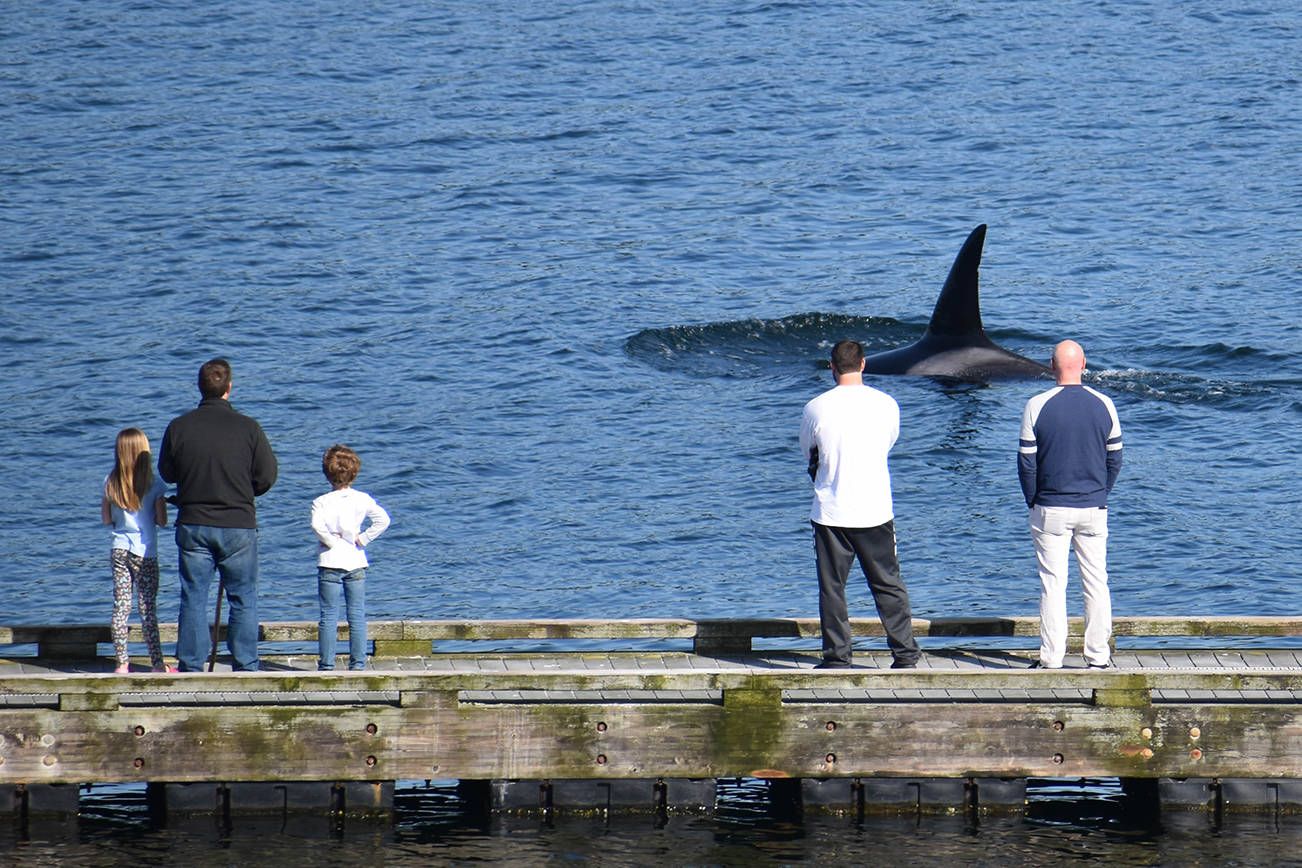Submitted by Orca Network
Seeing whales brings such peace and lightness to our souls, especially in such uncertain and difficult times, but due to COVID-19, the stay at home order, and safety of all, Orca Network has temporarily suspended the sharing of real-time whale sightings alerts and posts to our social media pages, though we continue to share our weekly Whale Sightings Report, past encounter photos and videos, educational information, news and activities on our Orca Network Facebook page, https://www.facebook.com/pg/OrcaNetwork/, and we continue to need your whale sightings submitted to us.
For over two decades Orca Network’s Whale Sighting Network has been tracking and identifying Southern resident orcas, transient or Bigg’s orcas, humpback whales, and in spring, the arriving North Puget Sound gray whales, or “Sounders” and assisting researchers and agencies such as National Oceanic and Atmospheric Administration Fisheries, the Center for Whale Research, and Cascadia Research Collective by providing sightings data, thanks to reports from the community.
Spring is always our busiest season — along with the arrival of the Sounders and other gray whales who often wander into Puget Sound during their migration north, we also see an increase in the numbers of transient (mammal-eating) orcas in our inland waters, heading into the deepest bays and inlets in Puget Sound after seals, sea lions and porpoise. In recent weeks we have been lucky to have the T46B family, which includes calf T46B1B, Tl’uk — the beautiful little white whale who has brought joy to many who have been lucky enough to see this family swim past their neighborhoods.
During this time Orca Network will continue to collect whale sightings for all species (orcas, grays, humpbacks, minke, dolphins, unknowns) so we are calling on those who live in waterfront communities to please share sightings with us — it’s more important than ever. Your whale sightings provide important citizen-community science by giving us data on the travel, habitat use, feeding-prey resources and socializing behaviors of the whales in our region. This information is used by federal, state and regional researchers to inform management policies and decisions.
Since the “Stay at Home” order and suspension of real-time reporting which in normal times alerts citizen volunteers who help us gather sightings information, we are more reliant than ever on reports from those living in waterfront-view homes and communities who see whales in their neighborhoods. We ask that you please send any whale sighting reports and photos to Orca Network to help keep this important data coming in during these times, and also ask that you maintain safe social distancing and only watch from your home or neighborhood.
To report whale sightings:
Call: 360-331-3543 or Toll-free 866-ORCANET (672-2638).
Email: info@orcanetwork.org and cc alisa@orcanetwork.org
What to report:
• Date and time.
• Species (if uncertain please report as uncertain and describe).
• Number of whales or dolphins.
• If orcas: any adult males (5-6 foot dorsals) and if so how many? Did you see any open saddle patches? (Would indicate Southern Residents.)
• Location of whales or dolphins. Where in channel: Mid, east of mid, west of mid, etc. (helpful too if you include where you are viewing from.)
• Direction of travel.
• Speed of travel: Slow, medium, fast pace.
• Behaviors observed: Traveling, milling, breaching (body launches out of the water), hunting, etc.
• Photos and videos to assist with identification.
If you see boaters of any kind approaching too closely or not following whale watch regulations and guidelines (www.BeWhaleWise.org), contact the NOAA Fisheries enforcement at 800-853-1964.



